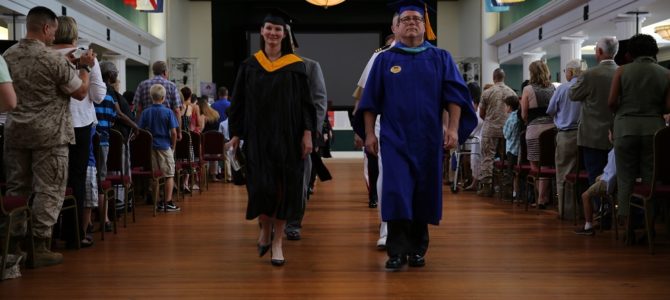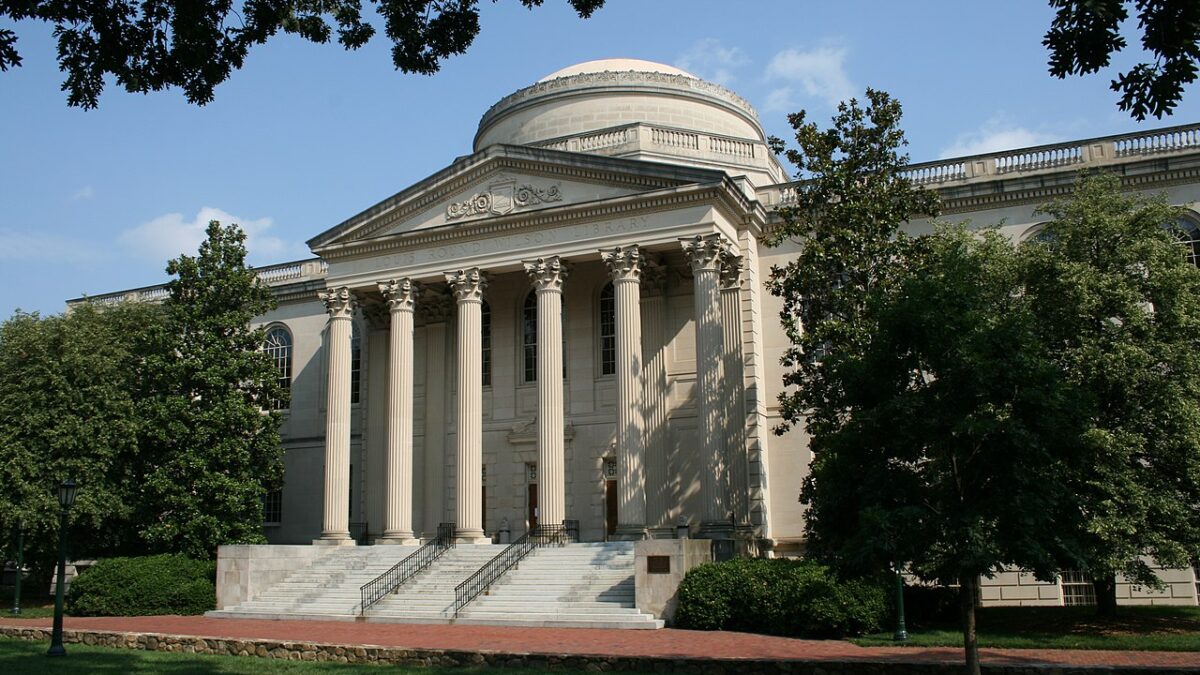
A whole new cohort of college freshmen is starting classes, adding to an ever-increasing number of students who borrow to pay for college. If past statistics are any indication, three-quarters of these students will leave college with debt.
Student loan growth has outpaced the value of credit card debt, home equity loans, and even auto loans. Altogether, about 44 million American student borrowers currently hold a shocking $1.48 trillion in student debt.
Some claim, like Sen. Bernie Sanders, that national politicians urgently need to address this problem. They bid us understand this cumulative debt as a “crisis” and opinion pieces regularly tow the narrative that monthly student loan payments are “crushing,” squeezing budgets and inhibiting larger purchases, such as homes.
But I know from personal experience that student debt doesn’t have to feel “crushing,” nor did it postpone my American dream for very long. My husband and I paid off the entirety of our student loans, $55,000, within 20 months. One of those loans was a Parent Plus Loan with a 13 percent interest rate in my husband’s parents’ name, which he paid himself.
We did this while bringing in an average income for two young full-time workers with bachelor’s degrees. Even before our student loan debt was fully paid off, we were able to secure a mortgage in a rural town a mere three years after graduation.
People Spend As Much on Fun As on Student Loans
Most adult Americans do not have student loan debt, and for those that do, the typical (median) outstanding debt is $13,000. Seventy-five percent of borrowers carry less than $29,000 in student loans, and only 3 percent of households that owed on any student loans comprised the highly publicized media horror stories of bearing six-figure loads. Most households with student loans spend nearly as much on entertainment as they do on their monthly student loan payment.
A third of college students graduate with no debt. Of the 69 percent who do graduate with debt, the average amount owed at graduation is $29,000. That’s a little greater than my husband and I had, but still not overly burdensome. For perspective, it’s about $17,000 less than an entry-level salary for a college graduate in humanities or the social sciences, the lower-paying majors.
If a college graduate lived on $30,000 a year (leaving $16,000 to put toward debt), which is extremely doable in low to moderate cost of living situations, she could pay off the average debt load in two years with after-tax income. After taking the following year or two to save for a down payment, she could be ready to buy a house by age 25.
For further perspective, the average monthly student loan payment is $351 and the median payment is $203. By contrast, the average car payment on a new vehicle (typically valued at $27,000) is $478. Consumers under 30 borrowed nearly $5 billion in new vehicle loans in January alone. So why aren’t we talking about “crushing” auto loan debt as a national crisis, when its total is only $300 billion less than cumulative student debt and the value of a new car is miniscule compared to the earning power afforded by a college degree?
Even graduates who’ve taken out “jumbo loans” ($55,000 or more) usually do so for graduate degrees or professional tracks that lead to much higher earning potential. As such, their situation usually isn’t as dire as their balances might make it seem.
Borrowers Themselves Don’t Think the Debt Is Crushing
Further degrading the narrative that college debt is a “crisis” is evidence that most millennials don’t even see their debt loads as an urgent matter. A survey from Citizens Bank found that fewer than half (47 percent) of millennial college graduates would be willing to cut down on food delivery to pay down their student loans.
Maybe they don’t think such trivial decisions would really make a dent in their loan balance, but small sacrifices like nixing food delivery, quitting one’s restauranting or bar-drinking habits, cutting cable, and switching phone plans can cover a substantial amount of that monthly payment.
Bigger decisions offer even more security. Even if one were earning significantly less than the average for liberal arts or social science majors, she could easily make room for a monthly payment of $203 by moving from a major city like San Francisco to a smaller city or town, where rent is lower and basics like food are a bit cheaper. Cutting a monthly car payment in favor of an older vehicle bought in cash would make up the difference as well.
Additionally, former students shouldn’t have too much trouble landing higher-paying jobs if they’re relatively smart and hard-working. U.S. employers are eager for good workers right now, having added 213,000 new jobs in June to sustain a low 4 percent employment rate for the ninth month in a row. The hot job market means even college dropouts, whose debt loads are usually much smaller than the average, have decent employment prospects to help them stay on top of their payments.
There Are Many Existing Safety Nets
On top of opportunities to earn and cut costs, former students have several options to ease the financial strain of repayment, up to the point of having their balance forgiven through government jobs like teaching. Loans can be deferred temporarily, consolidated, or restructured based on income. Even loans that have gone into default can be rehabilitated. It’s not as punishing or unforgiving a system as the crisis-hailers make it out to be, and the idea that student debt must be an onerous burden for decades or even several years is simply wrong.
We were able to pay down our debt so quickly not because of windfalls like an inheritance, a bonus, or a wage hike, but because we realized that things like car payments, new gadgets, and even brunch do add up.
Readers might remember that an Australian real estate mogul faced considerable backlash last year for suggesting millennials can’t afford to buy houses because they spend their money on avocado toast and $4 coffees. But the fact that a student loan total can seem like an insurmountable challenge at the beginning of one’s working career does not entitle him to ignore the effects of his other life choices. It certainly shouldn’t give him the ability to take money other people worked and saved for through a taxpayer bailout.
Inculcating former students with the idea that their student debt is “crushing” them, and that it constitutes a national “crisis” that requires other people’s thrift and work to bail out their imprudence doesn’t help them take control of their situation. As long as student debtors see their debt as anything other than their own responsibility, they won’t be looking for ways to solve their problem.
Being Responsible Is the Better and Right Path
Responsibility allows an individual to tap into her resourcefulness, and to be happier while doing it. If she is willing to even temporarily sacrifice conventional consumerism, including financed vehicles and renting fully updated or brand new apartment units in urban cores; if she is willing to pare back some of her little luxuries like delivered meals, new iPhones, and avocado toast; if she is willing to work a little harder and longer than her peers to stabilize her cash flow, she’ll realize that, far from crushing her American dream, student debt is quite manageable.
A real national “crisis” is the threat of nuclear war or the skyrocketing cost of the U.S. government’s unfunded liabilities, not individual consumers voluntarily deciding to finance all or a significant portion of their college education. They weren’t outright deceived about the value of their college education or how much it would cost. They were wooed by universities and goaded by teachers, but they weren’t coerced. Concerns over student loans have been mainstream for decades. They aren’t a secret.
While it’s true our government provided a shed full of shovels for students to dig themselves financial pits with easily accessible, low-interest loans, it is the student who picked up a shovel by signing that promissory note. As such, it is her responsibility, and hers alone.
So don’t buy the narrative that student borrowers are victims of an unfair system. By and large, they are fully capable of climbing out of that pit, and they’ll likely establish some good financial habits in the process.









